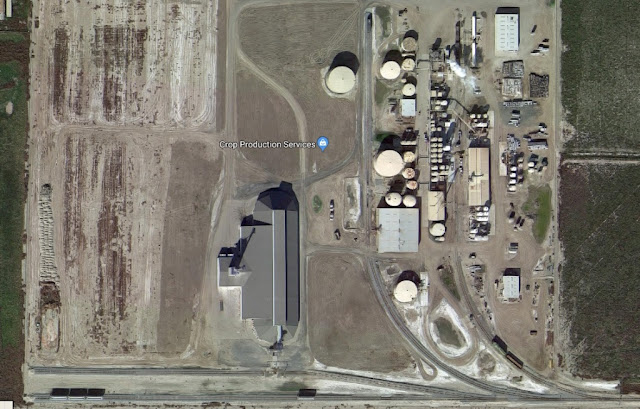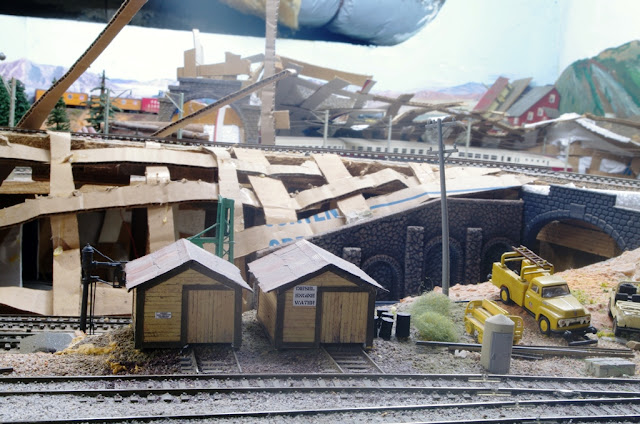I was trading info with fellow blogger and modeler
Neal M, when he suggested that a list of industries by themselves made it hard to visualize what kind of equipment might actually be routed to them. I sent him some photos, but then I began to realize that I hadn't updated my industry photos in a long time, and in other cases hadn't documented things very well at all. So this post will start a series of layout progress photos, with an emphasis on industries.
One of my biggest inspirations is George Sellios's Franklin & South Manchester. Over the years, many thousands of photos of this layout have been posted on the web. However, more recently, a few guys on a forum have come up with the idea of using cell phones, sometimes on selfie sticks, to get different camera angles. Check out this thread for some of the results. I've begun to experiment with cell phone shots as a result.
Meanwhile, here is the first set of progress shots. This covers the grain elevator in Jaques and the surrounding area. The elevator was a Timberline kit that I assembled nearly 50 years ago and upgraded with new paint and improved roofing about 15 years ago when I installed it on the layout.
Scenery is in progress in the background. I built the section sheds from SP drawings using heavy cardboard and Paper Creek building papers, now no longer made.
The German main line runs behind and below Jaques.
A cell phone shot from the other side of the peninsula. When the new scenery goes in, it may not be possible to get this one.
If you look closely, you can see that the spur for the grain elevator and the line running past it is dual gauge. The third rail for standard gauge ends just at the bottom of the photo.
The grain elevator hasn't yet been named. As an industry for virtual ops, it ships grain in clean 36- and 40-foot boxcars.
























